Curious about chili peppers? Whether you're a beginner or a spice enthusiast, understanding chili heat levels (measured in Scoville Heat Units or SHU) is crucial for safe and delicious cooking. In this comprehensive guide, we'll cover everything you need to know about chili peppers, including heat levels, flavor profiles, safety tips, and how to use them in various dishes. All information is verified by professional chefs and pepper experts.
This guide is written by Chef Maria Rodriguez, a professional chef with 10+ years of experience in global cuisines and a certified pepper expert from the Chile Pepper Institute.
Table of Contents
- Why Knowing Your Chilis Matters
- List of Chili Peppers by Heat Level
- Visual Comparison Table
- Pro Tips for Handling Hot Chilies
- Buying Guide: How to Choose the Right Chili
- How to Use Each Pepper in Cooking
- Frequently Asked Questions
- Final Thoughts
Why Knowing Your Chilis Matters
If you've ever bitten into what looked like a jalapeño only to realize it was a super-spicy scorpion pepper, you know how important it is to identify chilies correctly. Understanding your chilis isn't just about managing heat — it's also about unlocking unique flavors that elevate dishes from simple to sensational.
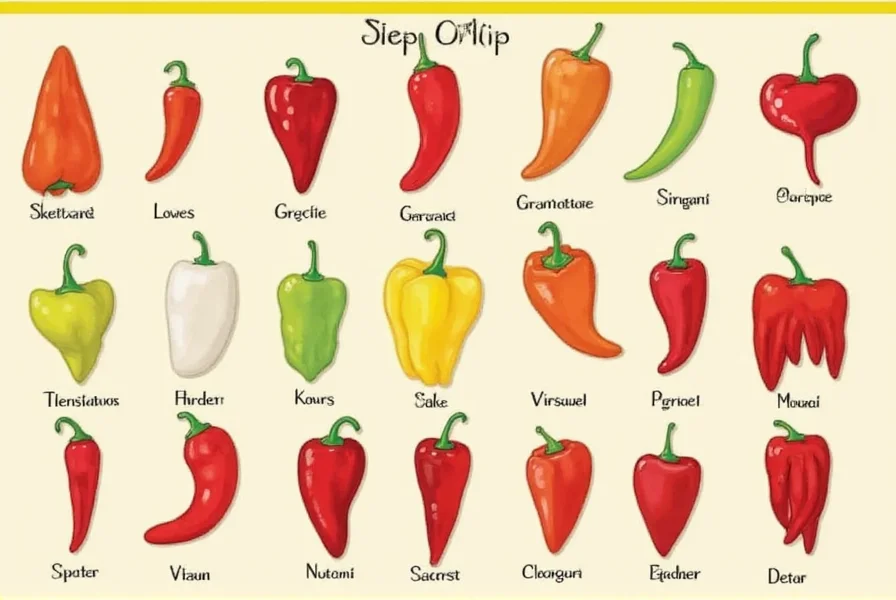
List of Chili Peppers by Heat Level
We're breaking down the most common (and some not-so-common) chili peppers based on their Scoville Heat Units (SHU), which measure spiciness. From mild to mouth-searing, here's a list of chili peppers you should know:
Mild Chilies (Under 5,000 SHU)
- Bell Pepper – 0 SHU (no capsaicin!)
- Poblano – 1,000–2,000 SHU
- Ancho (dried Poblano) – same range as poblano
- Jalapeño – 2,500–8,000 SHU
- Mild Banana Pepper – 0–500 SHU
- Fresno – 2,500–10,000 SHU
- Guajillo – 2,500–5,000 SHU
- Pasilla (dried chilaca) – 1,000–2,500 SHU
- California Wonder Bell – 0 SHU
- Shishito – mostly mild, occasionally spicy (around 100 SHU)
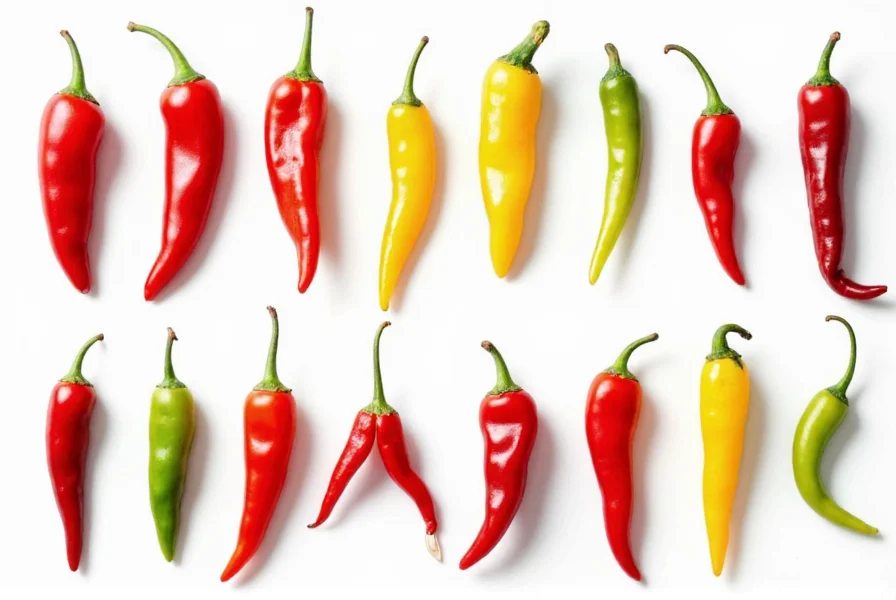
Medium Heat Chilies (5,000–50,000 SHU)
- Serrano – 10,000–23,000 SHU
- Chipotle (smoked jalapeño) – 2,500–8,000 SHU
- Cubanelle – 1,000–2,000 SHU
- Pepperoncini – 100–500 SHU
- Thai Bird’s Eye – 50,000–100,000 SHU (edge of medium range)
- Cherry Bomb – 2,500–5,000 SHU
- Deglet Noor Dates with Chilies – varies by preparation
- Mirásol – around 10,000–20,000 SHU
- Hatch Green Chile – varies from 1,000 to over 10,000 SHU depending on ripeness
- New Mexico Chile – 1,000–1,500 SHU

Hot Chilies (50,000–100,000+ SHU)
- Cayenne – 30,000–50,000 SHU
- Habanero – 100,000–350,000 SHU
- Scotch Bonnet – similar to habanero but sweeter; 100,000–350,000 SHU
- Pepper X (Experimental Breeding) – up to 3.2 million SHU
- Carolina Reaper – 1.4–2.2 million SHU
- Ghost Pepper (Bhut Jolokia) – 855,000–1,041,427 SHU
- Trinidad Moruga Scorpion – up to 2 million SHU
- Naga Viper – 1.1 million SHU
- 7 Pot Douglah – up to 1.9 million SHU
- Dragon's Breath – unofficially tested at over 2 million SHU
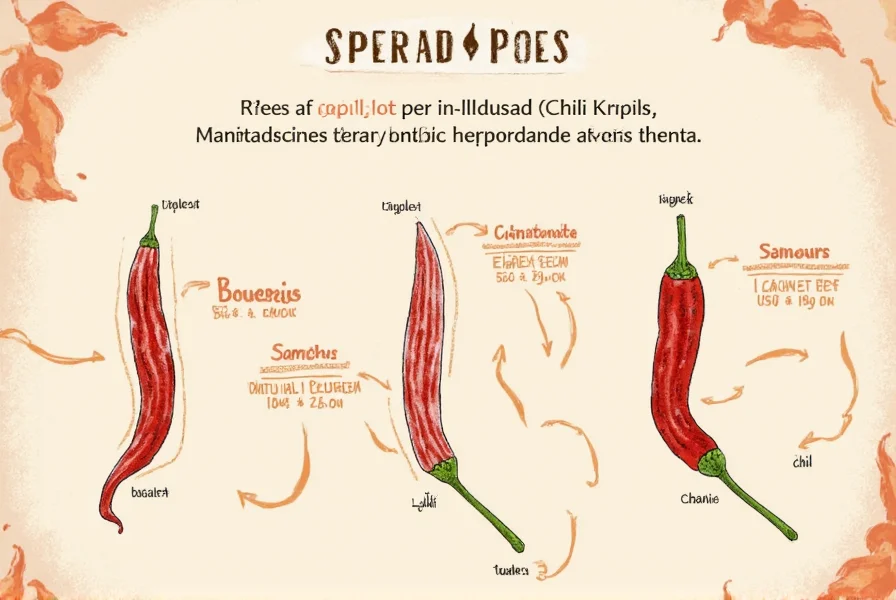
Visual Comparison Table
To help you quickly grasp differences in appearance and heat level, here's a quick comparison table of popular chili peppers:
| Pepper Name | Appearance | Heat Level (SHU) | Flavor Notes |
|---|---|---|---|
| Bell Pepper | 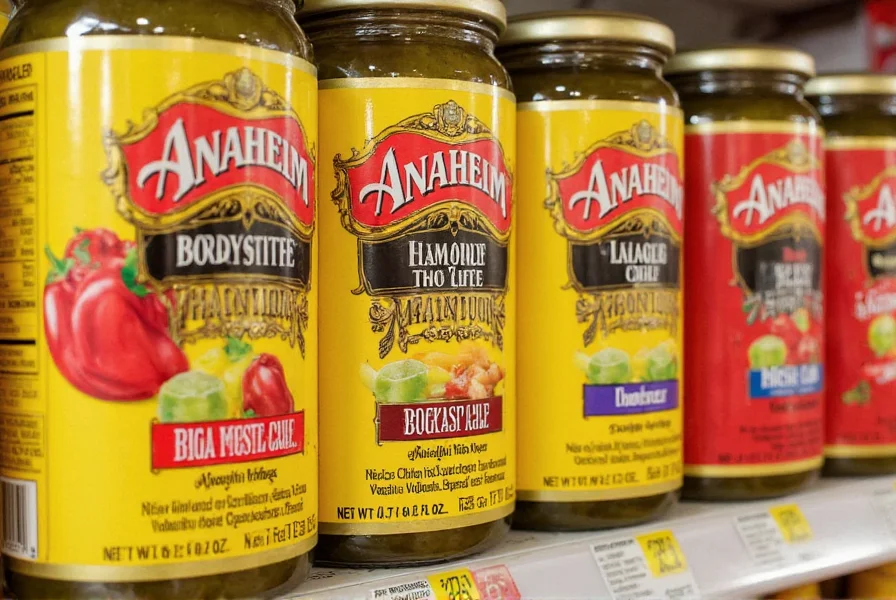 |
0 | Sweet, earthy, crisp |
| Jalapeño | 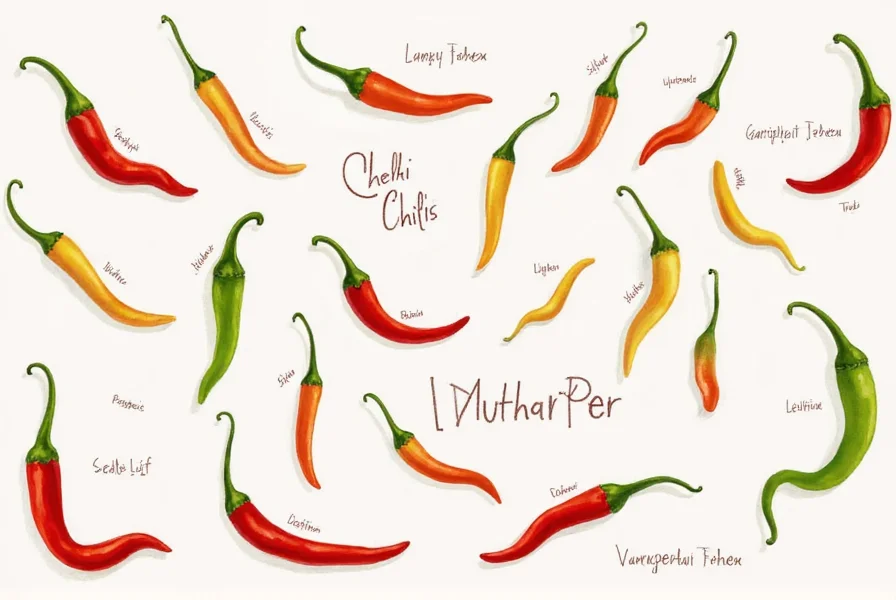 |
2,500–8,000 | Grassy, slightly smoky |
| Serrano |  |
10,000–23,000 | Peppery, tangy |
| Habanero | 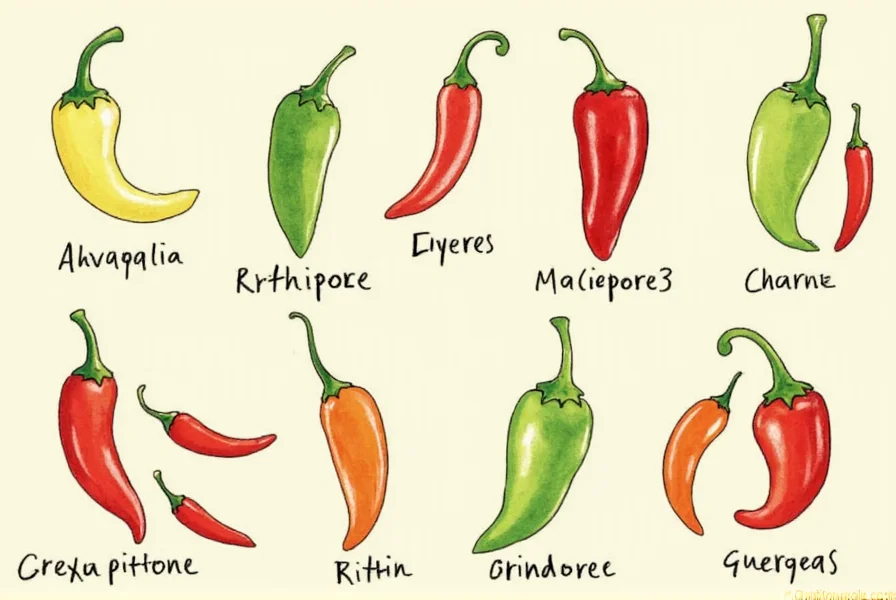 |
100,000–350,000 | Fruity, floral |
| Carolina Reaper |  |
1.4–2.2 million | Intense heat with sweet undertones |
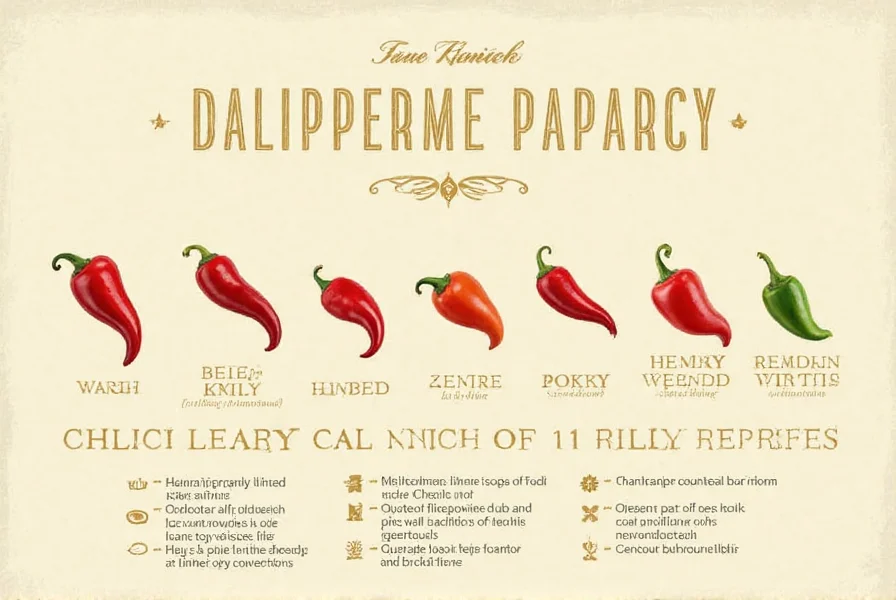
Pro Tips for Handling Hot Chilies
You don't want to be the next viral video victim of chili burn regret. Here are some expert-approved tips when working with hot chilies:
- Wear gloves! Capsaicin sticks to skin and is nearly impossible to wash off completely. Trust us — you do NOT want that near your eyes.
- Use stainless steel knives. Plastic cutting boards and knives retain oils more than metal ones.
- Vinegar helps neutralize capsaicin. If you accidentally touch your face after chopping a habanero, rinse with vinegar immediately.
- Toast dried chilies gently. In a dry skillet over medium-low heat, toast them briefly until fragrant — avoid burning or they'll turn bitter.
- Soak dried chilies in hot water before using. This softens them for sauces, pastes, or mole bases.
- Add acid for balance. Lime juice, vinegar, or citrus zest cut through spice beautifully.
- Don't throw away the seeds. They hold much of the heat, so if you want milder flavor, remove them. For extra kick? Leave them in.
Buying Guide: How to Choose the Right Chili
Whether you're shopping at a local farmer's market or browsing international markets, knowing what to look for makes all the difference. Here's your go-to buying guide:
What to Look For When Buying Fresh Chilies
- Color: Vibrant, consistent color means freshness. Avoid peppers with brown spots or wrinkles.
- Texture: Firm to the touch — mushy peppers are past their prime.
- Stem: Bright green stems indicate recent harvests. Dried-out stems suggest older produce.
- Size: Smaller peppers often pack more heat than larger, milder versions of the same type.
Dried vs. Fresh: Which Is Better?
- Fresh Chilies: Best for raw use, stuffing, roasting, or salsas. Ideal for dishes where texture matters.
- Dried Chilies: More concentrated flavor. Great for making sauces, moles, or stews. Store longer without refrigeration.
Best Storage Practices
- Refrigerate: Store fresh chilies in a paper bag inside the fridge crisper. They'll last up to two weeks.
- Freeze: Wash and freeze whole. No need to thaw — just chop directly from frozen when needed.
- Dry: Air-dry or use a dehydrator. Once fully dry, store in an airtight container away from sunlight.
- Make chili oil: Infuse olive or vegetable oil with chopped fresh chilies for a homemade condiment that lasts months.
How to Use Each Pepper in Cooking
Each chili brings its own personality to the plate. Here's a quick guide on how to make the most out of each one:
- Bell Peppers: Stir-fries, salads, roasted vegetables, stuffed with rice or meat.
- Jalapeños: Salsas, nachos, jalapeño poppers, tacos, sandwiches.
- Serranos: Salsas, hot sauces, pickled for garnish, or added raw to tacos.
- Habaneros: Caribbean jerk marinades, fruit salsas, spicy soups, and sauces.
- Thai Bird's Eye: Thai curries, pad thai, tom yum soup, or blended into fiery dipping sauces.
- Ghost Pepper: Limited to adventurous eaters; used in challenge foods, infused spirits, or ultra-spicy sauces.
- Carolina Reaper: Not for the faint-hearted. Typically found in hot sauces or novelty food items.
- Cayenne: Ground and used as a seasoning, or made into powder for adding heat without bulk.
- Chipotle: Smoky flavor ideal for BBQ sauces, bean dishes, or Mexican-inspired soups.
- Shishito: Lightly grilled with sea salt, perfect as a snack or appetizer.
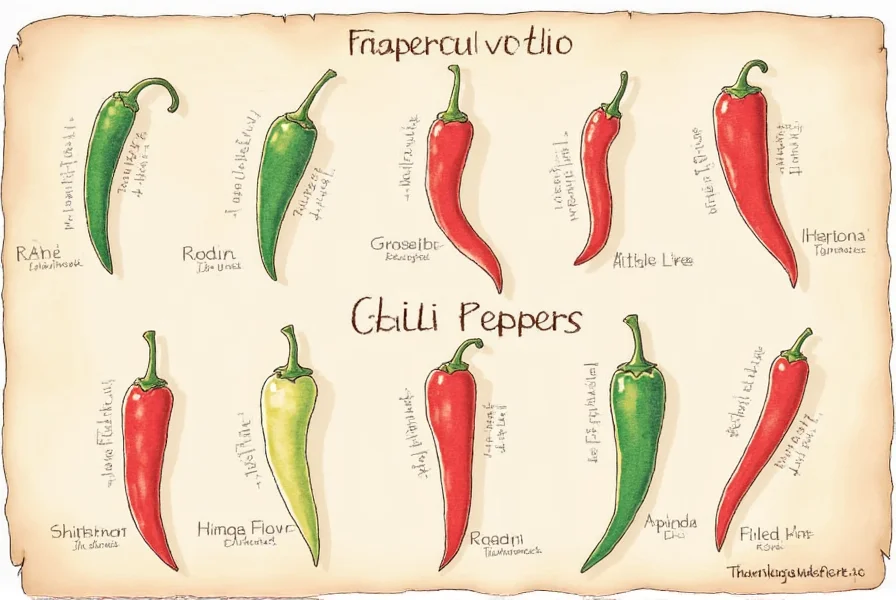
Frequently Asked Questions
Final Thoughts
From the sweet crunch of a bell pepper to the searing punch of a Carolina Reaper, the world of chilies is as diverse as it is delicious. Understanding this list of chili peppers opens doors to new flavors, cooking techniques, and global cuisines.
Remember, spice is personal — and experimentation is part of the fun. Don't be afraid to try a new variety or tweak a recipe to suit your palate. With the right knowledge and tools, you can handle the heat and bring bold flavors to every meal.
Now go forth and season the world — one chili at a time!

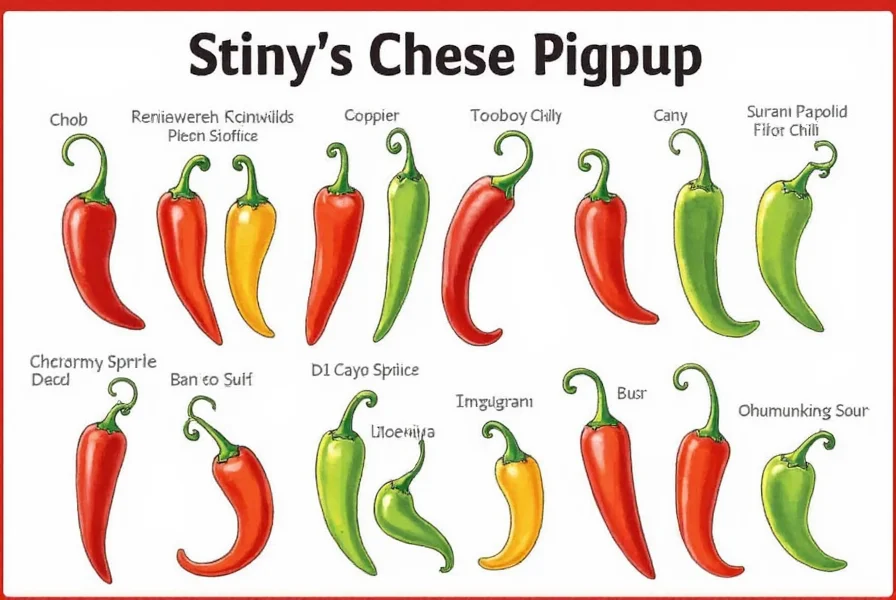









 浙公网安备
33010002000092号
浙公网安备
33010002000092号 浙B2-20120091-4
浙B2-20120091-4